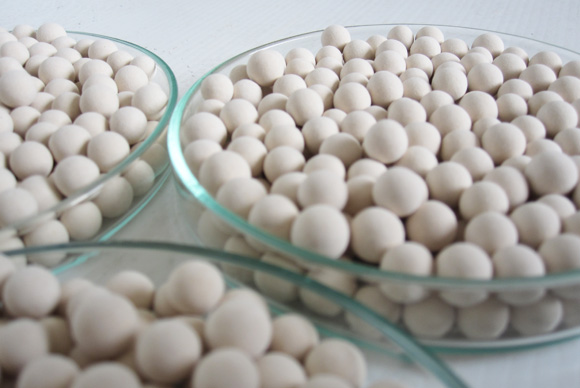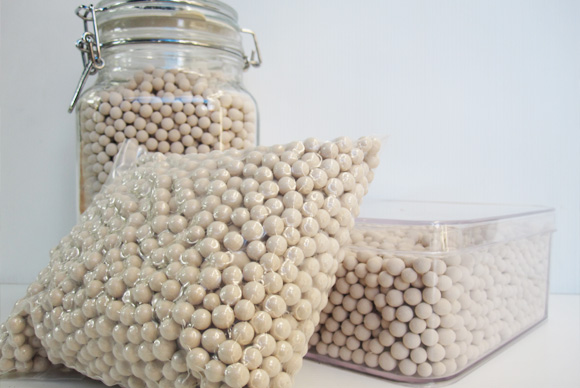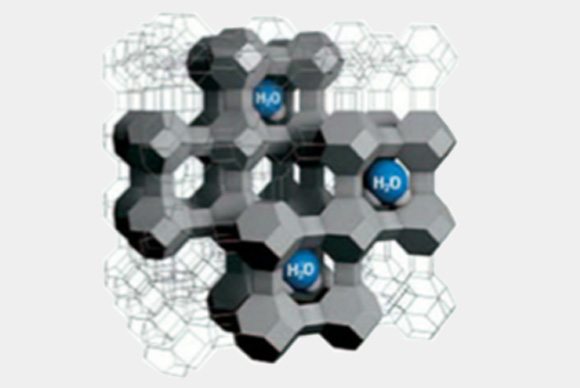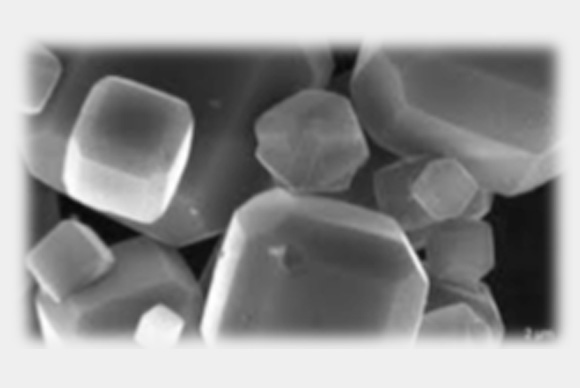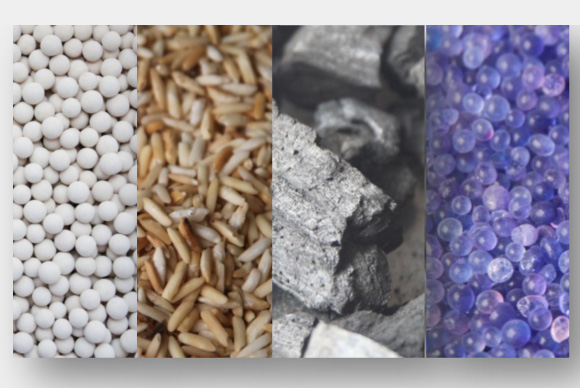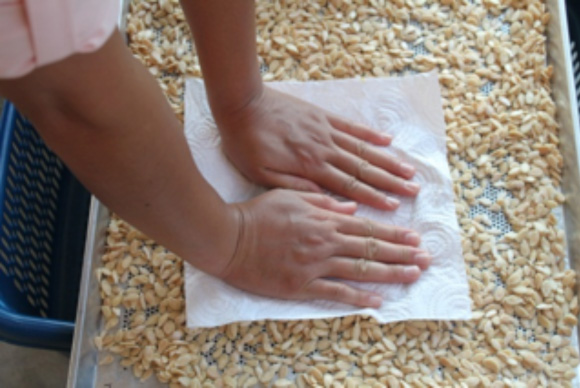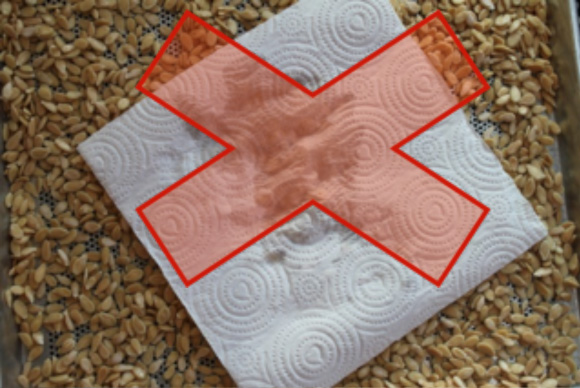Drying Beads Overview
Drying beads® are modified ceramic materials (aluminum silicates or “zeolites”) that specifically absorb and hold water molecules very tightly in their microscopic pores. The beads will continue to absorb water until all of their pores are filled, up to 20 to 25% of their initial weight. When placed in an enclosed space like a plastic or metal container, the beads will remove water from the air, creating and maintaining a very low humidity environment. Seeds (or other materials such as fruits or herbs) placed into a container with the beads will lose water due to the low air humidity, and will continue to do so until they come to equilibrium. Hence, desiccant-based drying simply transfers the water in the seed to the drying beads through the air without the need for heating. The beads can subsequently be removed and regenerated separately by heating at >200°C for 3-4 hours to release the absorbed water.
Why use Drying Beads?
Farmer co-operatives, government institution and seed companies use their resources in setting up drying systems that are expensive and consume time and energy resulting in increased costs. Some even try adapting lower humidity European and American technologies for seed drying in Asia but we know that the higher humidity conditions differ in much of SE Asia, so these technologies may not give the desired results.
This is where the Drying Beads technology comes into play. The Rhino Research Group is proud to describe this technology as “World’ Best Practice”. Utilization of drying beads is an economic, environmentally friendly, and faster way of drying and storing seeds. Drying Beads can be used in small scales (ex. Horticultural crops) or even large scale storage. Wherever water is required to be removed from a product consideration should be given to using drying beads as an economic alternative to existing methods.
Other Characteristics
-
Micro porous materials
-
Uniform pore dimensions, No size changes between dry and wet
-
Thermally very stable
-
Mechanically very stable
-
No polymerization during heating
-
Adsorption heat
-
Adsorption at high temperatures
-
Non toxic, food grade
-
20-25 weight % water
Why not just use silica gel or other desiccants?
Seed drying with desiccants is not a novel technology, and specific drying equipment based upon silica gel is available. Even other seeds, such as rice grains, when heated to dry them to very low levels, will absorb moisture from other seeds and act as a desiccant. However, silica gel has less affinity for water than seed drying beads at the low humidities needed to dry seeds to optimal storage moisture contents. Also, while silica gel can be regenerated by heating at relatively low temperature, there is loss of water-holding capacity with each cycle and it must eventually be replaced. In contrast, there is no loss of water-holding capacity of seed drying beads when heated for regeneration. It has been estimated that they could be regenerated a minimum of 10,000 times without loss of capacity. The beads are non-toxic and pesticide-free.
Can drying beads damage seeds?
If an excess of beads is stored with seeds, the seed moisture content will be reduced to very low levels. Most desiccation-tolerant (“orthodox”) seeds are not damaged even when dried to 3-5% moisture. Some larger seeds, particularly cucumber, watermelon, bottle gourd and bean, can be damaged by rapid rehydration from very low moisture contents, called imbibition damage. To be safe, it is a good practice to remove seeds from the sealed storage container and allow them to rehydrate in air under ambient conditions for a few days prior to planting or bringing into contact with liquid water. In most tropical regions, the ambient humidity will safely rehydrate the seed sufficiently to prevent imbibitional damage. Some seeds also become brittle when very dry and should be handled gently until they have had a chance to rehydrate from the humid air. This is particularly important for bigger seeds like beans.
Some seeds (termed “recalcitrant”) are damaged by drying and should not be dried using desiccant beads. Many tropical tree seeds like mango, durian, and palm or other seeds like citrus are recalcitrant and should not be dried using these beads.
Precautions
The beads release heat by an exothermic reaction when they absorb water. At the rate that water is absorbed from the air, this heat is readily dissipated and no discernible increase in temperature will be detected. However, if liquid water is added directly to dry beads, the rapid release of heat will raise the bead temperature to levels that can be injurious to the seeds and to workers. Thus, Do Not add beads directly to very wet seeds such as cucumber, melons or tomato seeds immediately after washing. Dry the seeds in air first to remove excess water before mixing directly with beads.
Exothermic reaction = generating heat during the absorption of water by the beads
- This temperature can reach 140°C
- This can be used as an advantage:
- No release of water without high temperatures
- Can reach ideal drying temperatures
This can be a risk if:
- used without a proper background or protocol
- when protocols aren’t followed
- System has to be tested and implemented correctly
Rules for safe drying
- Pre-moisturize the beads (do not use completely dry beads but have them pre-moisturized (will happen automatically because after the recuperation, you will always have some water intake and thus pre-moisturizing. In other words do not use beads with water intake higher than 22% on relatively wet seeds).
- Make sure that the seeds are surface dry (easily to check with a paper towel).

